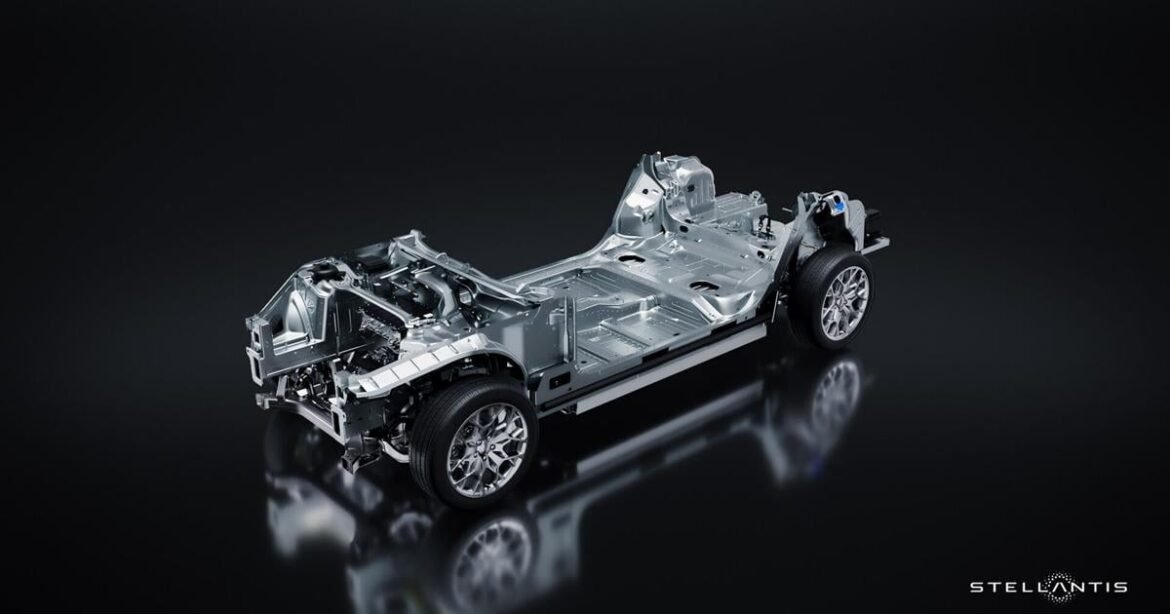Stellantis NV’s CEO on Friday said he’s trying to avoid a “bloodbath” by cutting costs, and one piece of that strategy is a new platform engineered in Auburn Hills that’ll underpin new Chrysler, Dodge, Jeep, Alfa Romeo and Maserati vehicles as early as this year.
This will be a pivotal year for the strictness of emissions regulations with elections for the U.S. president and European parliament. That’s a key focus for industry leaders as they make decisions around investments. Stellantis’ new vehicle platforms that can support different propulsion systems will allow it to respond based on how quickly the electric vehicle transformation moves.
For now, the automaker is on track with EV goals, CEO Carlos Tavares said, including finally entering the all-electric market in the Unites States. Stellantis’ U.S. sales fell 1% last year, as competitors reported increases. But Tavares said pricing only will come down to the degree that the automaker can reduce its costs. As Tesla Inc. slashes pricing on its electric vehicles, Tavares says he’s unwilling to jeopardize profitability, because EVs are 40% more expensive than their gas-powered counterparts and the automaker needs to invest in better technologies and efficiencies to survive the transition.
“If you just go and cut pricing, this regarding the reality of your cost situation, it’s a race to the bottom, and a race to the bottom will end up with a bloodbath,” Tavares said during a virtual presentation. “And that’s exactly what I’m trying to avoid.”
Part of that is the vehicles the automaker produces. Stellantis recently launched its first all-electric vehicle in North America, with Tavares saying he delivered the first Ram ProMaster commercial van to customer Amazon.com Inc. By the end of the year, the company will have eight EVs here, up from none.
Underpinning a number of those models and eight in total through 2026 will be the STLA (pronounced “stella”) Large platform. Designed for BEVs, the platform also can support hybrid and internal combustion engine powertrains.
It will support full-size vehicles in the D and E segments, including cars, crossovers and SUVs. Typically, it would take two to three platforms for all of the applications STLA Large will handle, said Marc Issner, global engineering head of the platform.
That’s from where the cost savings come, Tavares said: “In terms of R&D and (capital expenditures), the efficiency of this platform to cover a significant part of foreign brands, footprint and model footprint is going to be employed, which means that with one platform you are going to be distributing the cost of one platform. … Depreciation per unit of that platform is going to be much smaller than in previous cases.”
Plus, having multiple plants producing vehicles on the same platform will allow better manufacturing practices to come about and circulate sooner.
STLA Large’s sedans seek up to 500 miles of range and a 0-62 mph time in the 2-second range. It’s designed to support alternate chemistries as they become available, too.
“This is certainly a very powerful proposal to the customers,” Issner said, “that will completely erase any kind of range anxiety from their mind.”
Stellantis this week said the exclusively battery-electric Jeep Wagoneer S SUV coming to the U.S. market this fall and globally later will produce 600 horsepower and a 0-60 mph of around 3.5 seconds.
Battery pack options on the STLA Large platform range from 85 to 118 kilowatt hours, and it will support a 400-volt and 800-volt system. Fast charging will add up to 4.5 kilowatt hours per minute to the 800-volt pack.
Vehicles on the platform can be front-wheel, four-wheel or all-wheel drive. Engineers and designers can adjust the wheelbase, length, width, height and ground clearance. Suspension modules and powertrain cradles can change the vehicles’ drive, handling and comfort, and other alterations can tweak performance. The propulsion system can receive over-the-air software updates through the vehicle’s lifespan.
“If you want a curve-hugging, track-ready performance vehicle, a smooth-riding luxury car or a rock-clearing off roader,” he said, “we’ve addressed these needs within the platform.”
The platform offers a maximum ground clearance of 11.3 inches, and a maximum tire diameter of 32.6 inches. It can stretch 15 feet, 7.6 inches to 16 feet, 9.8 inches in length and from 6 feet, 2.7 inches to 6 feet, 7.9 inches in width.
Cost savings, Tavares said, will contribute to the development of more productive manufacturing processes; more efficient, smaller, lighter and less expensive battery cells; better energy management systems and improved aerodynamics.
Ultimately, if those things don’t happen or the automaker doesn’t cut its costs, Tavares says “freedom of mobility” could be at risk, and there could be greater “social consequences.” Stellantis on Monday said 539 supplemental employees across its U.S. manufacturing footprint are being permanently separated from the company following an evaluation of operations.
“I think the best way to go through this period is to try to protect your profitability,” Tavares said. “I’m trying to manage the right balance between protecting the footprint of my business and at the same time protecting my profitability, because I know that what is coming now is a big, big storm.”


